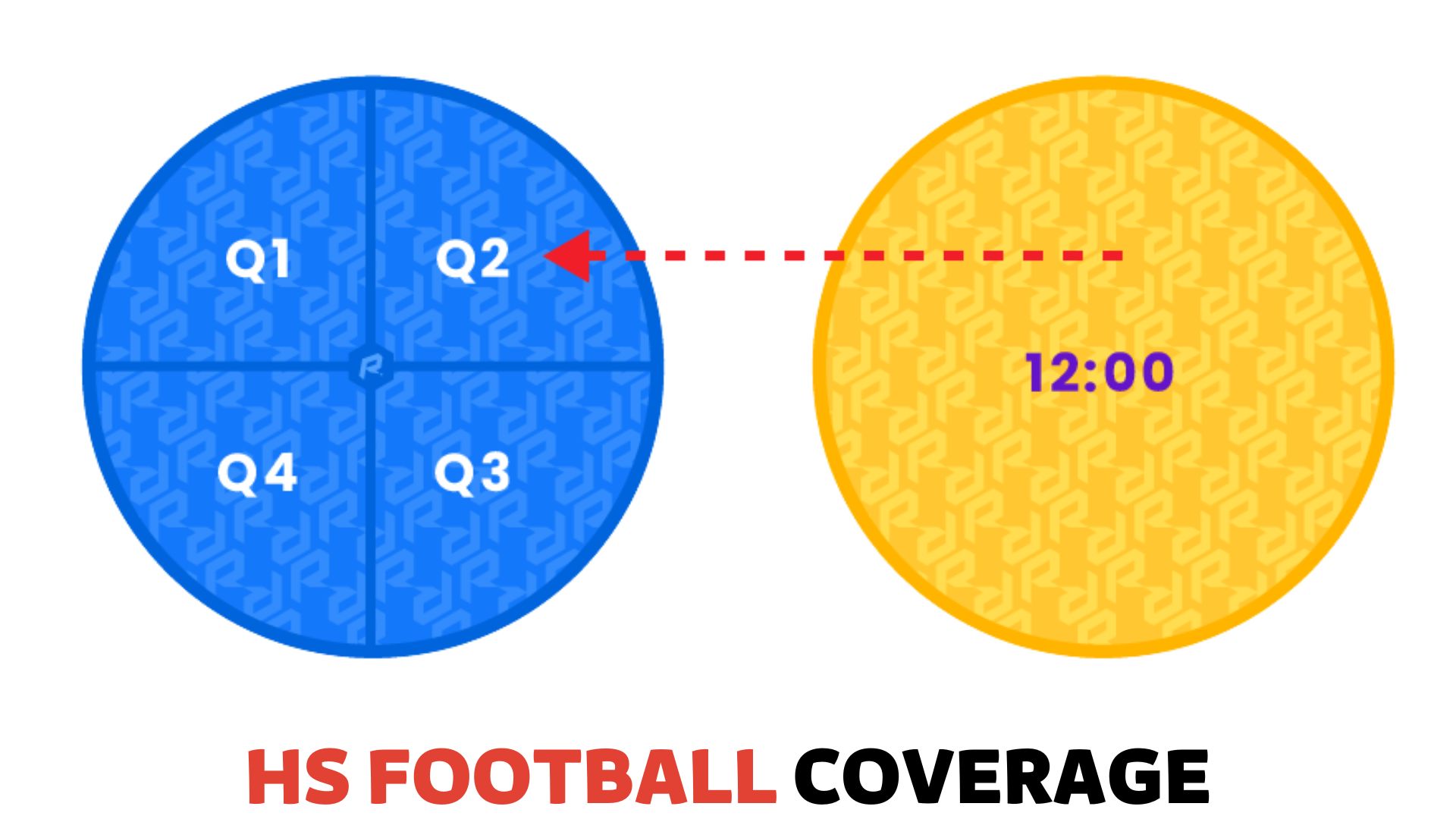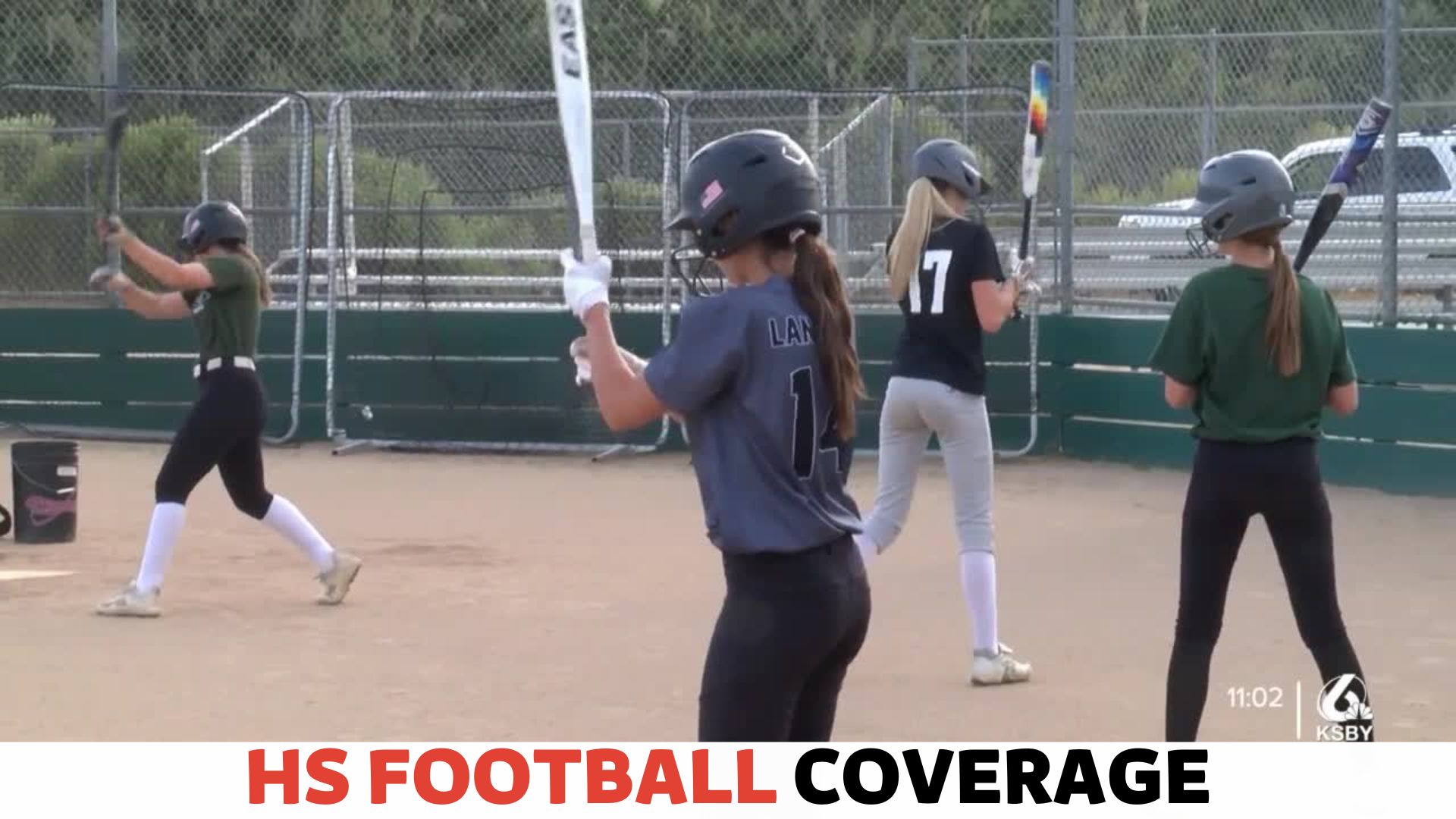
HS football games typically last around two and a half to three hours, depending on the level of play and any factors that may affect the game’s duration. The duration can be influenced by factors such as the number of players, the competitiveness of the game, and the occurrence of injuries or penalties.
Generally, high school football games consist of four 12-minute quarters, with breaks between quarters and a halftime period. These breaks allow for rest, strategy adjustments, and game management tasks.
It is important to note that game durations can vary, and it is always best to check with local high school athletic associations or the specific game schedule for accurate start and end times.
Strategies to Minimize Game Length
In the world of high school football, the duration of a game can sometimes be a concern for players, coaches, and even spectators. While the thrill of the sport is undeniable, lengthy games can be physically and mentally draining for everyone involved.
To address this issue, teams and officials have devised strategies to minimize game length without compromising the intensity and excitement on the field.
From efficient clock management to a faster pace of play, here are some tactics that can help streamline the duration of high school football games.
Efficient Clock Management
One effective way to reduce the length of football games is through efficient clock management. By carefully monitoring the play clock and ensuring that teams promptly execute their plays, unnecessary delays can be avoided.
Coaches play a vital role in this aspect by instructing their players to hustle back to the line of scrimmage after each play. Furthermore, officials are responsible for closely monitoring the game clock and ensuring it continues running smoothly throughout the game.
Faster Pace of Play
Another strategy to minimize game length is implementing a faster pace of play. This can be achieved through various means, such as:
- Huddling with purpose: Encouraging teams to have focused and quick huddles where play calls are made efficiently without wasting unnecessary time.
- No delay of game: Emphasizing the importance of avoiding delay penalties by penalizing teams that take too long to start the next play.
- Hurry-up offense: Encouraging teams to utilize hurry-up offenses, where they quickly line up for the next play and minimize downtime between plays.
- Limiting timeouts: Limiting the number of timeouts allowed per team can help prevent unnecessary stoppages in play and keep the game flowing smoothly.
By employing these tactics, teams can maintain a brisk tempo, keeping players engaged and the game moving forward without sacrificing the competitive nature of high school football.
Impact of Game Situation on Duration
When it comes to high school football games, the duration can vary depending on the game situation. Factors such as the length of close games, overtime, and extended play can affect how long a football game lasts.
Let’s dive deeper into each of these situations and how they impact the duration of a high school football game.
Length of Close Games
Close games in high school football are often the most exciting ones. These hard-fought battles between evenly-matched teams can keep spectators on the edge of their seats. However, such games can be prolonged as the clock keeps ticking.
With each team fighting tooth and nail for every yard, the game clock doesn’t stop unless there’s a timeout, injury, or a change of possession.
This means that the duration of a close game can ultimately be determined by the number of stops in play and the strategic decisions made by the coaching staff.
Overtime and Extended Play
Overtime in high school football occurs when the game is tied at the end of regulation time. This is an electrifying period where each team gets an equal opportunity to score and prevent opponents from doing so.
The overtime duration depends on the number of possessions each team gets and whether the game ends in a tie or someone emerges as the victor.
If a game requires multiple overtime periods, the duration can significantly increase, creating a thrilling spectacle for players and fans.
Furthermore, there may be instances where extended play is required due to unforeseen circumstances. Inclement weather, power outages, or other disruptions can cause interruptions and delays during the game.
In such cases, the game’s duration may be prolonged until conditions improve and play can resume.
In conclusion, the impact of game situations on the duration of high school football games should be considered when planning for these events.
Long and close games and overtime or extended play can make a football game last longer than expected. However, precisely these situations can add excitement and anticipation to the overall experience.
Typical Duration of HS Football Games
High school football games are a thrilling experience for players, coaches, and fans alike. However, if you’re planning to attend a game or want to know how long they typically last, it’s essential to understand the duration of these games.
Average Game Duration
High school football games are approximately two and a half hours on average. This includes four quarters, each lasting around 12 minutes.
However, it’s important to note that this average duration can vary depending on various factors, which we’ll discuss in the following section.
Variations in Game Duration
Several factors can contribute to variations in the duration of high school football games. Let’s take a closer look at these factors:
- Gameplay intensity: The pace and intensity of the game can heavily influence how long it lasts. If both teams prefer running plays and possess strong defenses, the game may progress more slowly, resulting in a longer duration. Conversely, if the teams employ quick-passing offenses and have weaker defenses, the game may move faster, shortening its duration.
- Penalties and timeouts: Penalties and timeouts can significantly contribute to the overall game length. Each penalty stops the clock and adds extra time to the game. Additionally, team timeouts for strategy discussions, injuries, or other reasons can extend the duration.
- Injury timeouts: Unfortunately, injuries are a part of any sport, including high school football. When an injury occurs, the clock is typically stopped to ensure the safety and well-being of the injured player. These injury timeouts can prolong the duration of the game.
- Overtime: In the event of a tied score at the end of regulation time, high school football games can continue into overtime periods. Overtime rules differ between states and may involve one or more possessions by each team. As a result, the game duration can increase significantly in such cases.
While these factors can contribute to variations in the duration of high school football games, it’s important to remember that they are general guidelines. Each game is unique and can develop its own dynamics, leading to longer or shorter durations.
How Game Duration Affects Spectators And Fans
How Game Duration Affects Spectators and Fans Impact on Overall Game Experience One of the key factors that significantly impact the game experience for spectators and fans is the duration of high school football games.
The length of these games can vary depending on various factors, including the teams’ playing style, level of competitiveness, and the number of timeouts and penalties incurred.
Understanding how game duration affects spectators and fans can help us better appreciate the importance of managing the pace and timing of these thrilling matchups.
Role of Halftime Entertainment The halftime break during a high school football game not only provides players with an opportunity to recharge and strategize but also plays a crucial role in ensuring an enjoyable experience for spectators and fans.
The Role of Halftime Entertainment
During this intermission, spectators and fans can relax, indulge in refreshments, and be entertained by various performances. Whether it’s the marching band delivering captivating tunes or halftime shows featuring dancers and cheerleaders, the thrilling halftime entertainment adds an element of excitement and energy to the overall game experience.
Impact on Overall Game Experience
When high school football games become excessively long, it can substantially impact the overall game experience for spectators and fans. The longer the game, the more chances for fatigue and restlessness. Spectators may lose focus, and their excitement levels may gradually decline.
This can have a domino effect, negatively impacting the energy in the stadium and reducing the electrifying atmosphere synonymous with high school football games. To prevent this from happening, game organizers must find a balance between the duration of the game and the level of entertainment provided.
By closely monitoring the game’s pace, referees, coaches, and officials can help maintain an optimal game duration that keeps spectators engaged and invested until the final whistle. HTML code:
Role of Halftime Entertainment
Halftime entertainment is a crucial buffer, offering a brief respite from the game’s intensity while keeping fans entertained and engaged.
The lively performances during this intermission rejuvenate spectators and provide an opportunity to showcase local talent and promote school spirit.
Whether it’s bold dance routines, breathtaking musical compositions, or awe-inspiring acrobatic displays, the halftime entertainment adds excitement and enjoyment to the overall game experience.
Impact on Overall Game Experience
The duration of high school football games plays a significant role in shaping the game experience for spectators and fans. The right balance between game duration and halftime entertainment ensures that spectators remain engaged, entertained, and invested in the game from start to finish.
By optimizing the pace of the game and offering thrilling halftime entertainment, organizers can maintain a lively atmosphere and deliver an unforgettable experience for all who gather to witness the power and magic of high school football.
Comparing HS Football Games to Other Levels of Play
When it comes to football, the duration of a game can vary depending on the level of play.
In this section, we’ll explore the differences in game length between high school (HS) football games and other levels of play. Specifically, we’ll compare high school, college, and professional football games.
Comparison With College Football Games
College football games tend to be longer than high school football games, primarily due to differences in rules and gameplay. While HS football games typically last around two to a half hours, college football games can extend beyond three hours.
One of the main factors contributing to the longer duration of college football games is the presence of TV timeouts. College football games are often broadcast nationally, and these timeouts allow for commercial breaks and analysis between plays.
These breaks can add significant time to the game, stretching it out.
In addition to TV timeouts, college football teams tend to have more plays and pass the ball more frequently than high school teams. This increased gameplay leads to additional stoppages, such as incomplete passes, penalties, and clock stoppages, further prolonging the game’s duration.
In summary, college football games generally last longer than high school football games due to factors like TV timeouts and more gameplay.
Differences From Professional Football Games
On the other hand, professional football games have a different pace than high school and college football games. While high school and college football games last around two to three hours, professional games typically range from three to a half hours.
Similar to college football, TV timeouts play a significant role in extending the length of professional football games.
The commercial breaks during the televised broadcasts are longer and more frequent, contributing to the overall duration of the game.
Furthermore, professional football games tend to have more complex strategies and a higher level of play. This can result in additional stoppages, such as challenging plays, timeouts, and reviews by coaches, officials, and the instant replay booth.
These stoppages, combined with more elaborate offensive and defensive schemes, can contribute to the longer duration of professional football games.
It’s also worth mentioning that in professional football, the halftime break is longer compared to HS and college football. The extended halftime allows for more time for adjustments, performances, and commercials.
To summarize, professional football games last longer than both HS and college football games due to factors like TV timeouts, complex strategies, and a longer halftime break.
Importance of Game Duration for Players and Coaches
When it comes to high school football games, the duration plays a crucial role for players and coaches. Understanding the physical demands on players and implementing effective strategies for managing game length are key factors contributing to the team’s success.
Physical Demands on Players
The physical demands on players during a football game are immense. Not only do they need to train rigorously before the game, but they also undergo intense physical exertion during the actual match.
From the explosive bursts of speed to the bone-crushing tackles, players push their bodies to the limits. Therefore, it is crucial to consider game duration to prevent injuries and optimize performance.
Let’s take a look at some of the physical demands that players face during a football game:
| Physical Demands | Description |
|---|---|
| Physical contact is a fundamental part of football; players experience repeated collisions and tackles. | Players cover large distances across the field, often sprinting at top speed. |
| Jumping | Players frequently jump to catch passes or defend against opponents. |
| Tackling | Football requires quick changes in direction, which strains the players’ joints and muscles. |
| Changing Directions | Football requires quick changes in direction, which puts strain on the players’ joints and muscles. |
Strategies for Managing Game Length
Coaches play a vital role in managing the length of a football game. By implementing effective strategies, they can ensure their team performs at their best throughout the match. Here are some strategies coaches can employ:
- Effective Time Management: Coaches must carefully manage the team’s time during practices and drills to develop stamina and endurance.
- Strategic Substitutions: Substituting tired players with fresh ones can help maintain the team’s energy levels and prevent fatigue.
- Optimizing Game Plans: Coaches must devise game plans that focus on conserving energy and capitalizing on the strengths of their team.
- Proper Conditioning: Conditioning exercises and fitness training are essential to improve stamina and ensure players can last the game’s duration.
- Adaptive Training: Coaches can adjust training intensity and duration based on the game duration to prepare players adequately.
By implementing these strategies, coaches can effectively manage the game length and optimize their team’s performance throughout the match.
Factors That Influence the Duration of HS Football Games
High school football games can vary in duration based on several factors. Understanding these factors can help players, coaches, and fans plan their schedules accordingly.
From kickoff time to duration of quarters, time spent on timeouts and play stoppages, and halftime activities and breaks, each aspect contributes to the game’s overall length.
Kickoff Time and Duration of Quarters
The kickoff time and the duration of quarters significantly determine how long a high school football game lasts. The game usually begins at a scheduled time, which can vary depending on the teams, their location, and venue availability.
Most games start late afternoon or early evening, allowing players and spectators to enjoy the game without interruptions or distractions.
The duration of quarters is another factor that impacts the game’s length. High school football games typically consist of four quarters lasting 12 minutes each.
However, it’s essential to note that the actual playing time can differ due to various stoppages and timeouts during the game.
This brings us to the next factor that influences the duration of high school football games – time spent on timeouts and play stoppages.
Time Spent on Timeouts and Play Stoppages
During a high school football game, timeouts are taken by the teams for various reasons, such as strategizing, injury assessments, or substitutions.
These timeouts can contribute to the game’s length, as each lasts for a specific duration. Additionally, play stoppages due to penalties, injuries, or reviewing instant replays can also affect the overall duration of the game.
The frequency of these stoppages can vary from game to game, making it challenging to predict precisely how long a specific high school football game will last.
Halftime Activities and Breaks
Another factor that influences the duration of high school football games is halftime activities and breaks. During halftime, the teams typically take a break to rest and regroup before continuing the game.
This break allows players to rehydrate, discuss strategies with their coaches, and catch their breath. Halftime activities, such as marching band performances or cheerleading routines, also add to the game’s overall length.
Considering these factors is important when planning to attend or watch a high school football game.
You can better manage your schedule and fully enjoy the game by understanding the kickoff time, duration of quarters, time spent on timeouts and play stoppages, and halftime activities and breaks.
Frequently Asked Questions
How Long is the Football Game?
A football game lasts about 90 minutes, excluding any additional time for injuries, penalties, and stoppages.
Do Football Games Last 3 Hours?
Football games typically last around 3 hours, including halftime and stoppage time.
How Long is Each Quarter of Football?
Each quarter of football lasts 15 minutes, making a total of 60 minutes for a full game.
How Long Are Quarters in Youth Football?
Quarter lengths in youth football typically last 10 minutes each, with four quarters in total.
How Long Do High School Football Games Last?
High school football games typically last around 2 to 3 hours, including pre-game ceremonies and halftime.
What Factors Can Affect the Duration of a High School Football Game?
The duration of a high school football game can be influenced by factors such as weather conditions, injuries, penalties, and the competitiveness of the teams.
How Many Quarters Are There in a High School Football Game?
A high school football game consists of four quarters, each lasting 12 minutes.
What Happens in Overtime During a High School Football Game?
In overtime, high school football teams can score from the opponent’s 10-yard line, with each team getting one possession. If the score remains tied after both teams have had possession, additional overtime periods will be played.
Are There Specific Time Limits for Halftime During High School Football Games?
Halftime during high school football games typically lasts around 15 minutes, giving players and coaches a chance to rest and strategize.
Do High School Football Games Have a Time Limit?
Unlike professional football games, high school games have no specific time limit. The game will continue until all four quarters are played, even if it takes longer than the scheduled duration.
Conclusion: How Long Do HS Football Games Last?
The duration of high school football games can vary depending on factors such as the level of play, weather conditions, and the extent of stoppages.
These games typically last around two to three hours, providing an exciting experience for players and spectators.
So, whether you’re a fan cheering from the stands or a player giving it your all on the field, enjoy the game and the thrills it brings.















